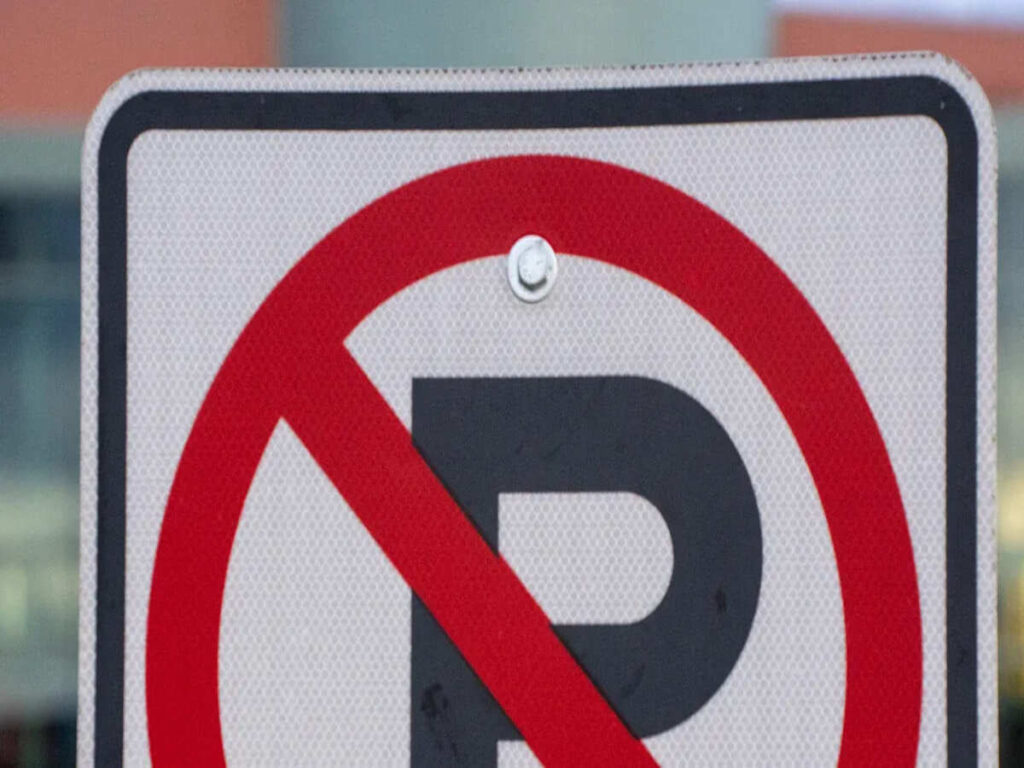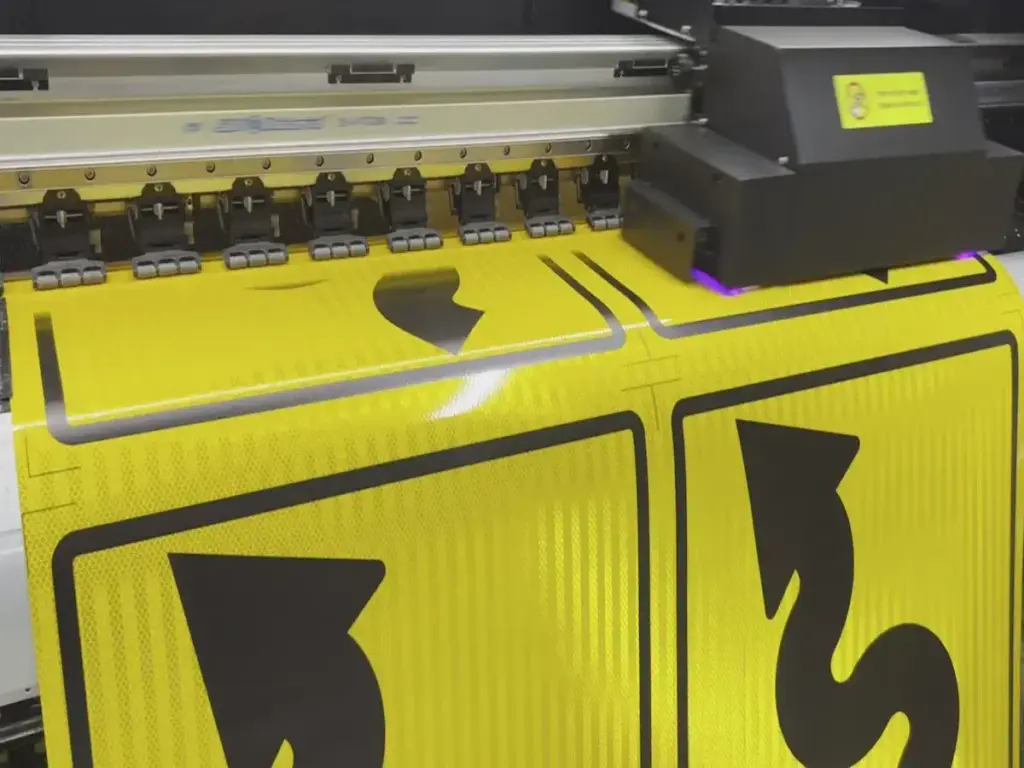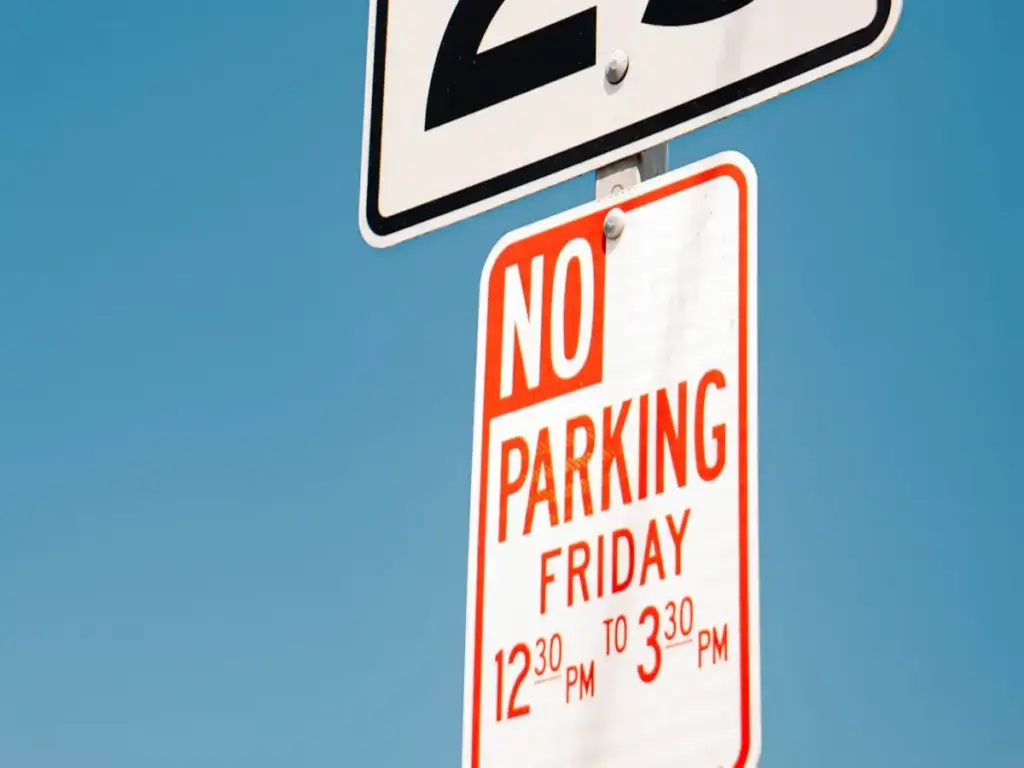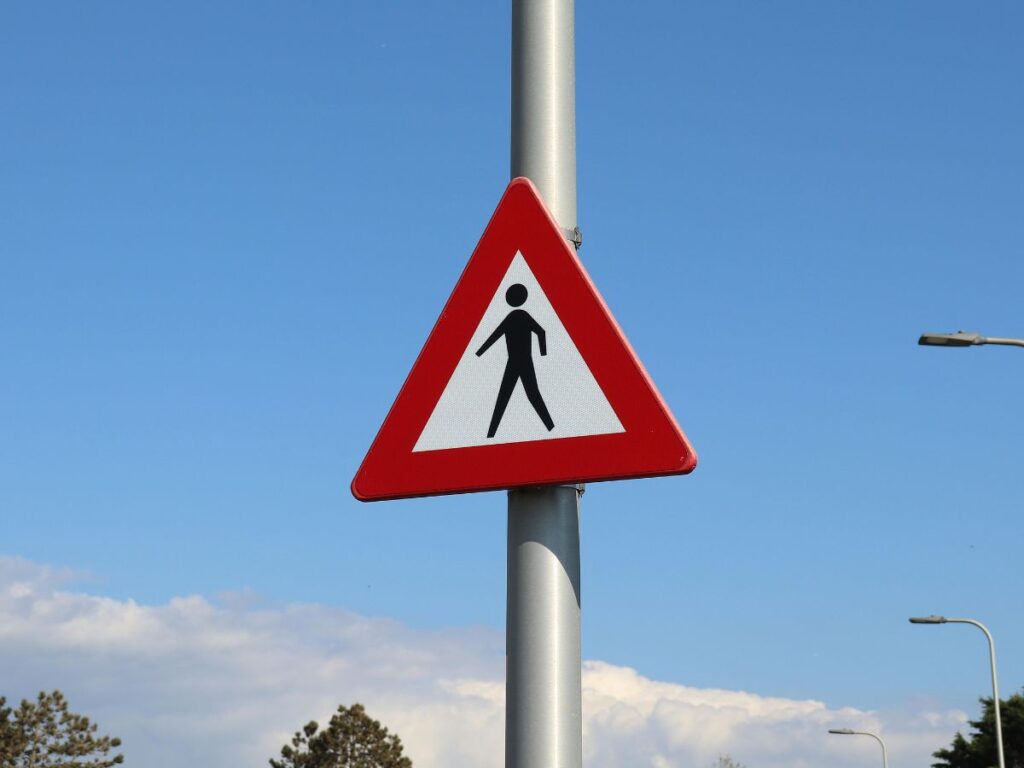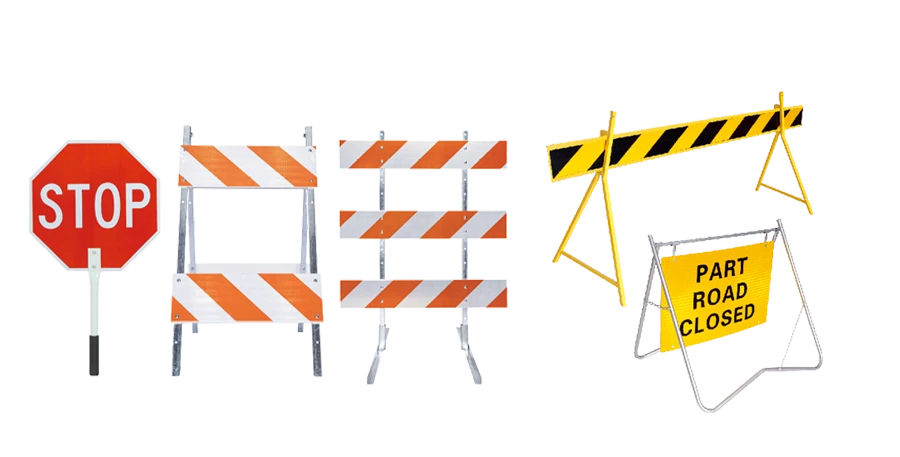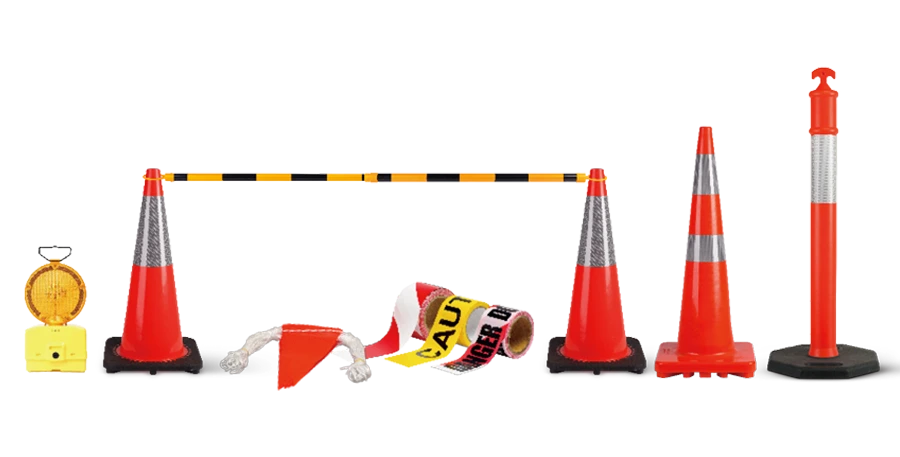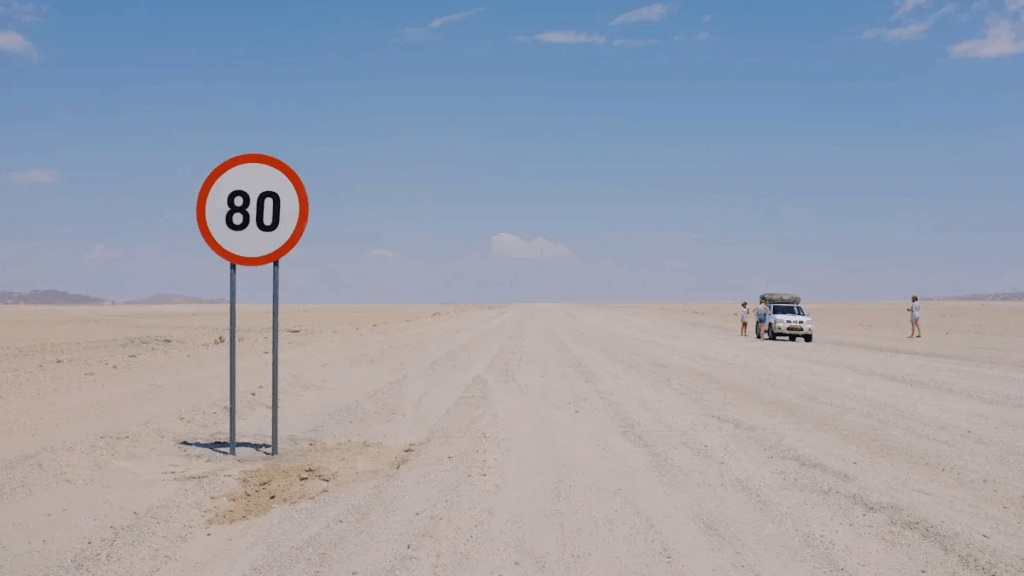
عندما تقود السيارة خارج منطقة مبنية في أستراليا, من المهم معرفة حد السرعة القصوى. هذا يساعدك على إبقاءك أنت والآخرين آمنين. منطقة مبنية هي مكان يحتوي على العديد من المباني وأضواء الشوارع. خارج هذه المناطق, الطرق أكثر انفتاحًا وأقل ازدحامًا. ولكن لا يزال هناك العديد من الأخطار. حوالي نصف جميع الوفيات على الطرق في أستراليا تحدث خارج المناطق المبنية. الحد الأقصى للسرعة المعتادة خارج المنطقة المبنية هو 100 كم/ساعة. حددته بعض الولايات والأقاليم عند 110 كم/ساعة. ابحث دائمًا عن علامات حدود السرعة. إذا كسرت القواعد, يمكنك الحصول على غرامة أو فقدان الترخيص الخاص بك.
في أوبترافيك, نحن نقدم مجموعة واسعة من الجودة العالية إشارات المرور, بما في ذلك علامات الحد الأقصى للسرعة, لضمان السلامة على الطرق والامتثال للوائح المحلية. تم تصميم علاماتنا لتوفير الوضوح, معلومات مرئية لمساعدة السائقين على الالتزام بالقانون والحفاظ على السلامة على الطرق.
قواعد الحد الأقصى للسرعة
الافتراضيات الوطنية
تبلغ السرعة القصوى لمعظم الطرق خارج المناطق المبنية في أستراليا 100 كم/ساعة. تساعد هذه القاعدة في الحفاظ على السفر آمنًا للجميع. كما أنه يجعل القواعد هي نفسها في جميع أنحاء البلاد. على هذه الطرق المفتوحة, يمكنك السفر لمسافات طويلة بشكل أسرع. ولكن يجب عليك دائمًا الانتباه إلى الطريق. أحيانا, الطرق السريعة والطرق الكبيرة لها حدود سرعة أعلى. قد ترى علامات ل 110 كم/ساعة على بعض الطرق السريعة. لا يُسمح بهذه الحدود الأعلى إلا إذا كان الطريق جيدًا وآمنًا. ابحث دائمًا عن علامات حدود السرعة. العلامات أكثر أهمية من القاعدة الافتراضية. إذا كنت لا ترى علامة, استخدم السرعة القصوى الافتراضية.
نصيحة: اتبع دائمًا علامات حدود السرعة. وهذا مهم جدًا عند دخولك أو مغادرتك منطقة مبنية. سوف تظهر لك العلامات عندما تتغير السرعة.
الاختلافات بين الولايات والأقاليم
لكل ولاية وإقليم في أستراليا قواعدها الخاصة فيما يتعلق بالسرعة القصوى خارج المناطق المبنية. سترى بعض الاختلافات إذا كنت تقود بين الولايات. يوضح الجدول أدناه حدود السرعة الافتراضية وبعض القواعد الخاصة:
| الدولة/الإقليم | حد السرعة الافتراضي خارج المناطق المبنية | استثناءات للتقصير الوطني (100 كم/ساعة) |
|---|---|---|
| الإقليم الشمالي (NT) | 110 كم/ساعة على الطرق الريفية | 130 كم/ساعة على ستيوارت, أرنهيم, باركلي, الطرق السريعة في فيكتوريا |
| أستراليا الغربية (ل) | 110 كم/ساعة على العديد من الطرق الريفية | 110 كم/ساعة افتراضيًا خارج المناطق المبنية, الطرق السريعة عادة 100 كم/ساعة ما لم يتم التوقيع على خلاف ذلك |
| نيو ساوث ويلز (نيو ساوث ويلز) | 100 كم/ساعة افتراضية | 110 كم/ساعة الحد الأقصى المسموح به على الطرق السريعة, الطرق الريفية عالية الجودة, وبعض الطرق الريفية غير المقسمة في غرب نيو ساوث ويلز |
| جنوب أستراليا (على) | 100 كم/ساعة افتراضية | بعض الطرق التي تم وضع علامة عليها 110 كم/ساعة |
| أراضي العاصمة الأسترالية (يمثل) | 100 كم/ساعة افتراضية | لا 110 مناطق كم/ساعة |
| تسمانيا (الذي - التي) | 100 كم/ساعة افتراضية | لا 110 مناطق كم/ساعة; التخفيضات المقترحة قيد المراجعة |
| فيكتوريا (فيك) | 100 كم/ساعة افتراضية | لا 110 مناطق كم/ساعة |
| كوينزلاند (QLD) | 100 كم/ساعة افتراضية | لا 110 مناطق كم/ساعة |
أعلى حدود السرعة موجودة في الإقليم الشمالي. على الطرق السريعة مثل ستيوارت, أرنهيم, باركلي, وفيكتوريا, السرعة القصوى هي 130 كم/ساعة. هذه هي أسرع سرعة يمكنك قيادتها على الطرق العامة في أستراليا. في ولايات أخرى, الحد الأقصى للسرعة عادة لا يزيد عن 110 كم/ساعة, حتى على الطرق السريعة الكبيرة.
| موقع | أعلى حد للسرعة المنشورة | ملحوظات |
|---|---|---|
| الإقليم الشمالي (طريق ستيوارت السريع) | 130 كم/ساعة | أعلى حد للسرعة المعلنة على الطرق السريعة الرئيسية منذ ذلك الحين 2007 |
| جنوب أستراليا (طريق ستيوارت السريع) | 110 كم/ساعة | تم نشر حدود السرعة خارج المناطق المبنية بين حدود Port Augusta وNT |
يجب عليك دائمًا اتباع علامات حدود السرعة, حتى لو كنت تعرف القاعدة الافتراضية. تختار سلطات الطرق هذه الحدود للسلامة وجودة الطريق. تبلغ السرعة القصوى لبعض الطرق السريعة 110 كم/ساعة. والبعض الآخر يحافظ على الحد عند 100 كم/ساعة. إذا رأيت علامة ذات حد أدنى, ابطئ. إذا رأيت الحد الأعلى, يمكنك الذهاب بشكل أسرع, ولكن فقط حتى السرعة المعلنة.
ملحوظة: تساعد حدود السرعة القصوى في الحفاظ على سلامتك وسلامة الآخرين. تحقق دائمًا من وجود علامات حدود السرعة الجديدة, خاصة عند السفر إلى أماكن أو ولايات مختلفة.
خارج المناطق المبنية
الاعتراف بحدود المنطقة
عليك أن تعرف متى تغادر أ المنطقة المبنية. يساعدك هذا على اتباع الحد الأقصى للسرعة الصحيح. منطقة مبنية بها العديد من المنازل, المتاجر, وأضواء الشوارع. عندما ترى مباني أقل وإضاءة أقل, من المحتمل أنك خارج منطقة مبنية. ابحث عن العلامات التي تشير إلى نهاية المدينة أو الضاحية. هذه العلامات غالبا ما تحدد الحدود. قد تلاحظ أيضًا تغييرًا في تصميم الطريق. عادة ما تكون الطرق خارج المنطقة المبنية أوسع ولها تقاطعات أقل.
نقاط التحول مهمة. يقولون لك عندما يتغير الحد الأقصى للسرعة. قد ترى علامة تقول “نهاية 60” أو “100 كم/ساعة”. تظهر علامات حدود السرعة هذه أنك قد غادرت منطقة مبنية. تحقق دائمًا من هذه العلامات. إنها تساعدك على البقاء آمنًا وتجنب خرق القانون.
نصيحة: إذا كنت غير متأكد, أبطئ السرعة وابحث عن علامات الحد الأقصى للسرعة. من الأفضل القيادة بأمان بدلاً من المخاطرة بغرامة.
الإشارات البيئية والطرق
يمكنك استخدام البيئة لمساعدتك في معرفة مكانك. خارج المنطقة المبنية, سترى المزيد من الأراضي المفتوحة, الأشجار, والحقول. هناك ممرات مشاة أقل وحركة مرور أقل. أصبحت إضاءة الشوارع نادرة. المباني منتشرة أو مفقودة. قد ترى أيضًا علامات تحذيرية للحيوانات أو الانحناءات الحادة.
تضع سلطات الطرق علامات حدود السرعة في أماكن واضحة. يستخدمون خططًا ومعايير خاصة لتحديد مكان وضع كل علامة. يفكرون في نوع الطريق, منحنيات, تلال, والأشجار. يجب أن تكون العلامات سهلة رؤيتها, حتى من بعيد. على الطرق الريفية, العلامات أكبر حتى تتمكن من قراءتها بسرعات أعلى. يساعد ارتفاع كل علامة وزاويتها السائقين على اكتشافها بسرعة. هذا التخطيط الدقيق يحافظ على سلامة الجميع.
يتذكر, حدود السرعة في المناطق المبنية أقل. بمجرد مغادرة المنطقة المبنية, غالبًا ما يزيد حد السرعة الافتراضي. اضبط سرعتك دائمًا لتتناسب مع الطريق والظروف.
شرح علامات حدود السرعة
علامات دائمة
ستشاهد علامات حدود السرعة على معظم الطرق خارج المناطق المبنية. تستخدم هذه العلامات خلفية بيضاء مع رقم أسود غامق داخل دائرة حمراء. يوضح الرقم السرعة القصوى التي يمكنك السفر بها كيلومترات في الساعة (كم/ساعة). تبرز الحدود الحمراء وتشير إلى قاعدة يجب عليك اتباعها. الأحمر يعني التوقف أو الخطر, حتى تعلم أن العلامة مهمة. الألوان البيضاء والسوداء تجعل اللافتة سهلة القراءة, حتى من مسافة بعيدة. يساعدك نظام الألوان هذا على فهم القاعدة بسرعة والبقاء آمنًا.
- تظهر علامات حدود السرعة دائمًا أعلى سرعة مسموح بها.
- الدائرة الحمراء تعني أنه لا يمكنك السير بشكل أسرع من الرقم الموضح.
- علامات أخرى ذات حدود حمراء, مثل عدم الدخول أو عدم وجود مواقف للسيارات, استخدم هذا الأسلوب أيضًا لإظهار القواعد التي يجب عليك الالتزام بها.
ستجد هذه العلامات في بداية منطقة السرعة الجديدة, بعد التقاطعات, أو عندما يتغير الطريق. إذا كنت لا ترى علامة, يجب عليك اتباع الحد الأقصى للسرعة الافتراضية لتلك المنطقة.
ملحوظة: ابحث دائمًا عن علامات حدود السرعة عند القيادة في أماكن جديدة. أنها تساعدك على تجنب الغرامات والحفاظ على سلامة الجميع.
العلامات المؤقتة وأعمال الطرق
أحيانا, سترى علامات حدود السرعة المؤقتة. غالبًا ما تظهر هذه العلامات بألوان زاهية, مثل الأصفر, لجذب انتباهك. قد تراهم بالقرب من أعمال الطرق, الحوادث, أو غيرها من المخاطر. تخبرك العلامات المؤقتة بإبطاء السرعة من أجل السلامة. قد يكون العمال أو المخاطر الأخرى قريبة من الطريق.
- تحل علامات حدود السرعة المؤقتة محل الحد المعتاد حتى يزول الخطر.
- يجب عليك اتباع هذه العلامات, حتى لو كانت الإشارة الدائمة تشير إلى سرعة أعلى.
- عندما تتم إزالة العلامات المؤقتة, تنطبق علامات حد السرعة العادية أو الحد الافتراضي مرة أخرى.
إذا كنت لا ترى أي علامات الحد الأقصى للسرعة, تذكر استخدام السرعة الافتراضية لهذا النوع من الطريق. كن دائمًا متيقظًا للتغييرات, خاصة في المناطق الريفية أو النائية.
السلامة والامتثال
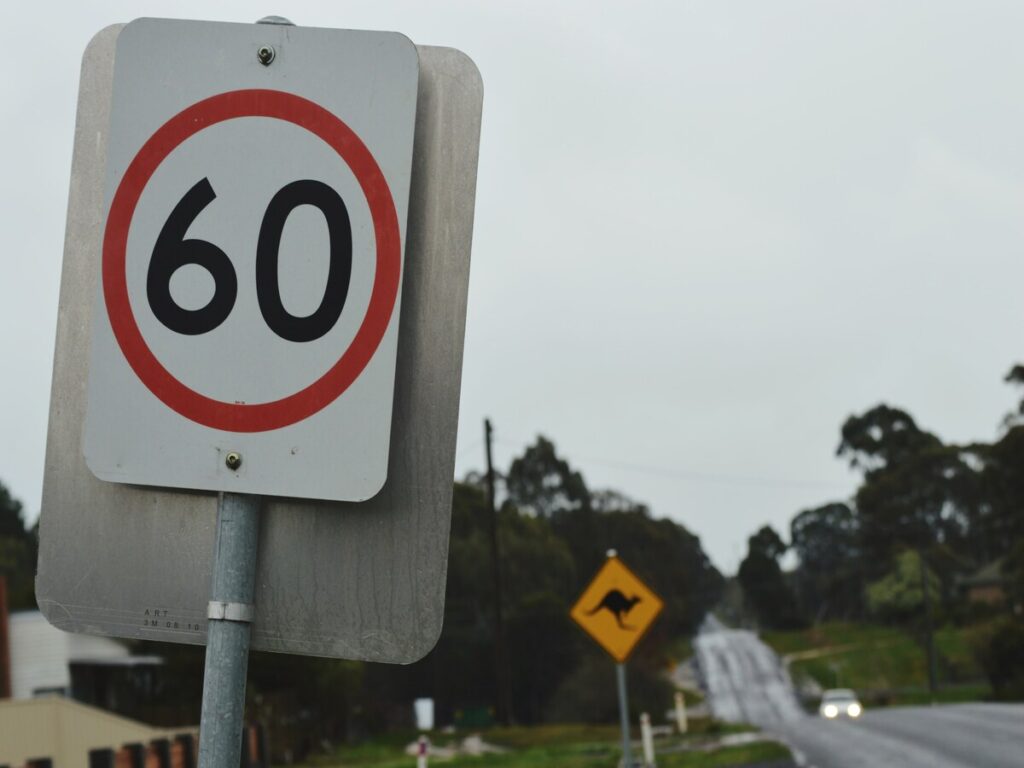
العواقب القانونية
يجب عليك اتباع قوانين السرعة عند القيادة خارج المناطق المبنية. إذا كسرت هذه القواعد, تواجه عقوبات خطيرة بسبب السرعة. يمكن للشرطة أن توقفك وتفرض عليك غرامة. يعتمد المبلغ على مدى تجاوزك للحد الأقصى للسرعة. يمكنك أيضًا الحصول على نقاط الحرمان من رخصتك. يمكن أن تؤدي النقاط الكثيرة إلى تعليق الترخيص. تستخدم بعض الولايات كاميرات السرعة للقبض على السائقين الذين يخالفون القانون. هذه الكاميرات تعمل ليلا ونهارا.
| نوع المخالفة | عقوبة محتملة |
|---|---|
| السرعة البسيطة | بخير, نقاط Demerit |
| السرعة الكبرى | غرامة أعلى, المزيد من النقاط |
| السرعة المفرطة | تعليق الترخيص, محكمة |
ملحوظة: يمكن أن تؤثر عقوبات السرعة أيضًا على تأمين سيارتك. قد تقوم شركات التأمين بزيادة قسط التأمين الخاص بك إذا كان لديك مخالفات السرعة.
يجب عليك دائمًا التحقق من قوانين السرعة المحلية قبل السفر. قد يكون لكل ولاية قواعد وعقوبات مختلفة.
مخاطر السلامة على الطرق
القيادة بسرعة كبيرة على الطرق الريفية أمر خطير. غالبًا ما تحتوي هذه الطرق على انحناءات حادة, الحصى فضفاضة, أو عبور الحيوانات. قد لا ترى المخاطر إلا بعد فوات الأوان. يمكن أن تكون حوادث التصادم على الطرق الريفية أكثر خطورة لأن وصول المساعدة قد يستغرق وقتًا أطول. يجب عليك ضبط سرعتك لتتناسب مع ظروف الطريق والطقس.
تحدث العديد من الحوادث عندما يتجاهل السائقون حدود السرعة أو لا يبطئون السرعة بسبب المخاطر. يمكنك تقليل المخاطر الخاصة بك عن طريق البقاء في حالة تأهب واتباع العلامات. تدير الحكومة حملات مثل “السرعة تقتل” لتذكيرك بالقيادة الآمنة. يمكنك أيضًا العثور على نصائح على المواقع الرسمية للسلامة على الطرق.
نصيحة: أبطئ سرعتك دائمًا إذا رأيت علامات التحذير, سوء الأحوال الجوية, أو الحيوانات بالقرب من الطريق. القيادة الآمنة تنقذ الأرواح.
لقد تعلمت الحقائق الرئيسية حول حدود السرعة القصوى خارج المناطق المبنية في أستراليا. ابحث دائمًا عن علامات حدود السرعة وقم بتغيير سرعتك إذا تغير الطريق أو الطقس.
- تعرف على الحدود الافتراضية, ولكن اتبع دائمًا العلامات التي تراها.
- احترس من التغييرات, خاصة عند القيادة في الأماكن الريفية.
نصيحة: يمكنك الكتابة عن تجاربك الخاصة أو طرح الأسئلة في التعليقات. إن معرفة المزيد تساعدك أنت والآخرين على البقاء آمنًا على الطريق.
التعليمات
ماذا يحدث إذا تجاوزت السرعة المحددة خارج المناطق المبنية؟?
قد تحصل على غرامة أو تفقد نقاط النقص. يمكن للشرطة إيقافك أو استخدام كاميرات السرعة. إذا كنت تسرع كثيرا, يمكن أن تفقد الترخيص الخاص بك. تكاليف التأمين قد ترتفع أيضا.
كيف تعرف متى يتغير حد السرعة?
ابحث عن علامات حدود السرعة. هذه العلامات تظهر الحد الجديد. قد ترى أيضًا علامات على أطراف المدن أو قبل الطرق السريعة. تحقق دائمًا من التغييرات أثناء القيادة.
هل هناك حدود سرعة مختلفة للمركبات المختلفة؟?
نعم. بعض المركبات الثقيلة, مثل الشاحنات أو الحافلات, لديها حدود سرعة أقل. يجب عليك التحقق من القواعد الخاصة بنوع سيارتك. قد تظهر اللافتات حدودًا خاصة لهذه المركبات.
هل يمكن للطقس أو أعمال الطرق تغيير الحد الأقصى للسرعة?
نعم. قد يؤدي سوء الأحوال الجوية أو أعمال الطرق إلى خفض الحد الأقصى للسرعة. سوف تظهر العلامات المؤقتة الحد الجديد. قم دائمًا بإبطاء السرعة إذا رأيت هذه العلامات أو إذا كان الطريق يبدو غير آمن.


